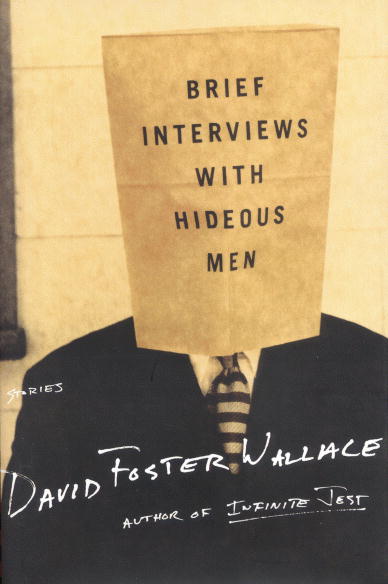You have no items in your cart. Want to get some nice things?
Go shopping In the interest of full disclosure, my fascination with mental illness stems from personal experience. I’ve flirted with obsessive compulsion, endured depression, cowered from anxiety, and raged from bipolar outbursts. Consequently, I pay more attention than most to the portrayals of mental illness in the books I read. Where a character has a mental illness of any sort, it greatly affects the character’s personality, actions, and how they are perceived. Was Hamlet depressed, or just a wuss? Was Edna suicidal, or just selfish? And say a character does have a definitive illness, how accurately is s/he portrayed? Does the portrayal pay proper homage to real people with the same illness, or is it a lazy collage of stereotypes?
In the interest of full disclosure, my fascination with mental illness stems from personal experience. I’ve flirted with obsessive compulsion, endured depression, cowered from anxiety, and raged from bipolar outbursts. Consequently, I pay more attention than most to the portrayals of mental illness in the books I read. Where a character has a mental illness of any sort, it greatly affects the character’s personality, actions, and how they are perceived. Was Hamlet depressed, or just a wuss? Was Edna suicidal, or just selfish? And say a character does have a definitive illness, how accurately is s/he portrayed? Does the portrayal pay proper homage to real people with the same illness, or is it a lazy collage of stereotypes?
A true rendering of a mentally ill person in a book or story can be vindicating to someone suffering from the same condition who reads the book. Because of the stigma attached to mental illness, it’s not easy to talk about your mood swings with your friends, or to get your family to understand why you must check—exactly nine times—that the door is locked. So when I read a story with characters I can relate to, I feel not only a sense of camaraderie—we’ve both been through this together—but also extremely validated when they have the same thoughts, do the same things, things that other people may not understand or even recognise. When a character flinches in the same way, and dreads the same social situations, you feel like yes, this is real. This is how we are. Of course, many authors get it wrong and portray mental illness in misleading or wholly inaccurate ways, but some get it right, and when they do—when the tics and the despondency are as convincing as if they were inside your head—it is especially comforting.
David Foster Wallace’s “The Depressed Person“, from his collection Brief Interviews with Hideous Men, is one example. He got it right. Like countless other SNOOTs (“Syntax Nudniks of Our Time”—a term popularised by Wallace to mean a grammar and usage fanatic in his essay “Tense Present“), I have a deep admiration and affection for Wallace. His portfolio includes the seemingly unending Infinite Jest, a wonderful collection of essays entitled Consider the Lobster, and a commencement speech that was encapsulated in a book called This is Water. His suicide in September 2008 suggests some of the struggles that plagued Wallace throughout most of his life, which was most recently the topic of conversation in a biography penned by D.T. Max, Every Love Story is a Ghost Story, released in August this year.
Though he never wrote expressedly about his own mental health history, on several occasions he discussed various aspects of mental illness in his work. “The Depressed Person” relays the life of a woman who, though shallow and unlikeable, struggles through a familiar brand of depression with her therapist and her few relatively supportive friends. Independent of the woman’s grating personality (which gathered a fair amount of criticism upon publication), her grapple with depression should resonate with those who have encountered it ourselves. The shame the depressed person experiences when calling members of her support system results in an all too recognisable sense of inadequacy at the formidable challenge of verbalising her anguish. Wallace neatly describes her drama with prescription medications as well as her complicated relationship with her therapist. An especially poignant passage lists the varying treatments that have failed the protagonist:
Paxil, Zoloft, Prozac, Tofranil, Wellbutrin, Elavil, Metrazol in combination with unilateral ECT (during a two-week voluntary in-patient course of treatment at a regional Mood Disorders clinic), Parnate both with and without lithium salts, Nardil both with and without Xanax. None had delivered any significant relief from the pain and feelings of emotional isolation that rendered the depressed person’s every waking hour an indescribable hell on earth.
The description is so authentic, I suspect Wallace is drawing from his own experience. Usually, the drugs—Wellbutrin, Strattera, Lexapro, Cymbalta—don’t work at all, and they never work at initial doses. You count yourself lucky if your medication of the month doesn’t leave you with a particularly nasty side affect, which could be anything from a rash, to heart palpitations, to tinnitus, to a dangerous speed-like high. More serious cases of depression will require drug cocktails—two Lithium with breakfast, two with dinner, two Seroquels at bedtime, various sedatives throughout the day—to do any good at all.

As for the woman’s relationship with her therapist, it involves a dizzying amount of reflection that begins and ends and begins again with the woman’s own selfishness. It is difficult not to be selfish with regard to one’s therapist, as his or her occupation is to tend to the patient’s thoughts, feelings and progress. The therapist can be the best and only friend a patient has, but as a relationship the patient pays to keep, it cannot be as personal or meaningful as she may wish it to be. It is derived from a business relationship, one whose definition ensures the whole focus is on the patient. The acknowledgement that the relationship is contrived can be damaging to the depressed person. Whether her character is unduly exaggerated, her feelings and experiences are not.
For all these reasons, “The Depressed Person” is, possibly, the most accurate account of depression I have read. You can read it here at Harpers.
Have a short story you want to share with Litro readers? Please submit here.

About N/A N/A
Kathleen Elise is a Cuban-American and a voracious reader from Miami, Florida. She has worked as a news director, a DJ, and as a writer and editor of radio stations and written for publications both stateside and in the UK. Currently living in London to earn her master's at University College London, she spends her time watching TV, listening to records, and internally correcting other people's grammar. She wishes she were as cool as her little sister.




